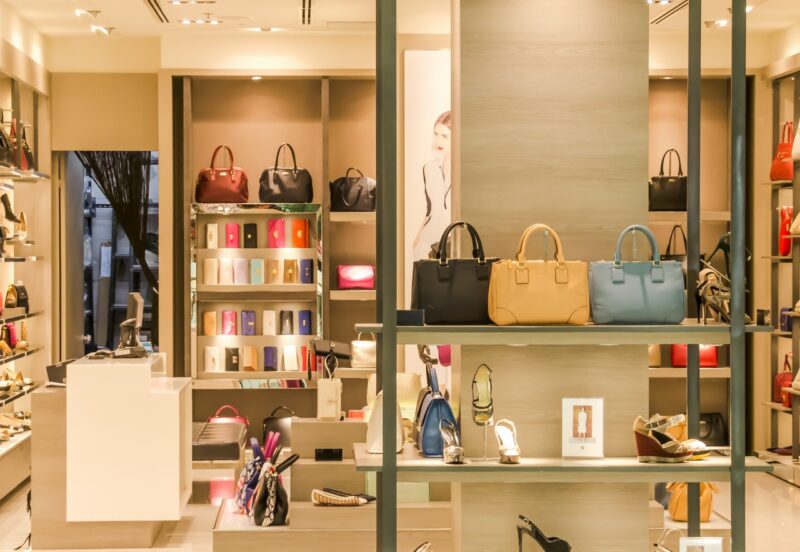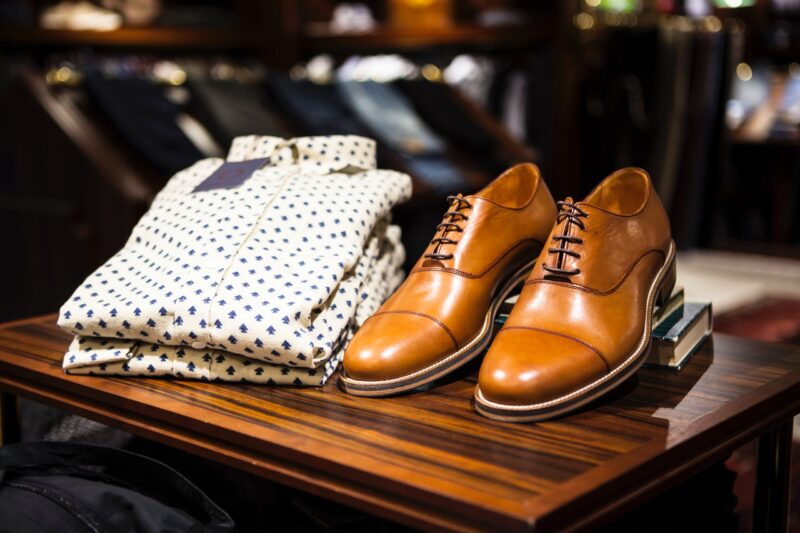Do you know that clothing comprises 3 to 6.7 percent of global carbon emissions caused by humans?
In decades past, the fashion industry wasn’t exactly known for being eco-friendly. Animals such as seals and minks were hunted for their fur. Non-biodegradable, non-compostable polyester clothes were mass-produced due to the low price and ease of production.
A lot of processes used to manufacture garments cause air, water, and land pollution. And in facilities that mass-produce clothes, working conditions were inhumane, uncomfortable, and unsafe.
But that gradually changed in the early 1990s. Businesses and consumers in the fashion industry started to incorporate modern environmental movements (a collective of social, philosophical, and political developments aimed to address environmental issues) into their business and activities, giving rise to what is now known as sustainable fashion.
Also called “eco-fashion” or “green fashion,” sustainable fashion is all about encouraging change to fashion products, processes, systems, and behaviors towards better ecological integrity and humane working conditions.

The principles surrounding green fashion were based on the philosophies of ecologists Ernest Callenbach, Fritjof Capra, Arne Næss as well as design theorist Victor Papanek. These principles are also intertwined with human-nature relationships as advocated by eco-feminist Carolyn Merchant, American artist Suzi Gablik, environmental activist Vandana Shiva, and ethicist Carol Gilligan.
Patagonia and ESPRIT were considered to be the two pioneer brands that ushered in the practice of green fashion. Owned respectively by avid outdoorsmen Yvon Chouinard and Doug Tompkins, these companies became the first brands to introduce environmental concerns into their business.
Seeing how the environment was harmed by the overconsumption of goods, both owners funded extensive research into the impacts of fibers used in manufacturing their products.
Through the gathered data, they were able to find more eco-sustainable raw materials and imposed more ethical and environmentally friendly processes in producing their goods. The legacy and success of Patagonia and ESPRIT continue to shape the green fashion movement until today.
Because people all over the civilized world all wear clothes, sustainable fashion permeates all aspects of society, not just the clothing manufacturers and fashion labels. It also includes the government and the citizens, all working together to achieve the responsibility of protecting the environment while looking and feeling good.
Upcoming Green Fashion Trends
The advent of the environment movement in the fashion industry gave rise to green fashion trends. Here are some eco-friendly fashion trends that are expected to be popular in 2021.
1. Recycled clothes
Recent recycling statistics show that worldwide waste production will increase to around 70% by 2050. While it may sound like a doomsday prediction, this statistic can be reduced, prevented, or averted if people, businesses, and governments take action.
In the fashion industry, this means recycling clothes. Used but still, wearable clothes, surplus garments, or brand-new clothes with minor defects can be donated to charities and churches. They can be sold in garage sales or clearance sales.
Used baby clothes can be given to friends and relatives who are expecting or growing a toddler. Photographers can use old clothes as models’ costumes for thematic shots. There are thousands of ways to recycle used clothes so they won’t take landfill space.
2. Repurposed clothes
Check out some fashion-related YouTube videos. You’ll notice young and creative people using their craft skills to create something new out of old clothes. There are bikinis made of oversized clothes, bags made of old jeans, tops made of scarves, dresses made of old gowns—the list is almost endless. These trendy, repurposed clothes look incredibly chic, trendy, and functional.
This initiative is widely present among budding designers worldwide. Aside from exploring raw materials and forms, as this contemporary master in fashion design and business teaches us, social factors are extremely important in producing original, conscious designs.
3. Rentable clothes
Once a special event is done, clothes such as prom dresses, evening gowns, tuxedos, costumes are often kept in the closet or discarded. There are also fashion enthusiasts and obsessive buyers who purchase clothes they don’t actually need.
With green fashion, however, these single-use garments may find a second life as rental clothes. The business model is actually sustainable and has become quite popular in Madrid, Amsterdam, and other European cities. People don’t have to purchase or spend an insane amount of money on custom-made clothes that they’re just going to wear only once. All the person needs to do is to rent the garment, have it washed, use it, then return it.
By renting out clothes, the usage of raw material for clothing is reduced, the clothes are reused several times, the entrepreneur generates income, and customers save money.
4. Use of sustainable fabrics
The sustainability of a certain kind of fabric depends on the number of resources needed to produce the material and the life cycle of the fabric. The less the amount of resources used, the longer the fabric retains its quality, the more sustainable it is.
As the world shifts to green fashion, we expect more garments made of more sustainable fabrics such as organic or recycled cotton, organic hemp, organic linen, and Tencel.
There are also materials that the industry refers to as “future fabrics.” These include piñatex (fabric derived from pineapple leaves), kimonos (fabric derived from spider silk), and bamboo.
5. Return of the classics
There has been a rise of prenuptial photos, themed photos, and experimental photography featuring models wearing garments that were thought of as out of style. Positively reviewed movies that are set in the Renaissance and Victorian eras have surprisingly ignited people’s interest in retro fashion.
Retro fashion enables people to wear clothes from past generations and add accessories. Fashion, after all, is a cycle, and what was considered outdated often makes a comeback.
6. Fabrics from recycled products
In May 2016, a textile company called Unifi developed a revolutionary flagship fiber brand named Repreve. The unique thing about Repreve is that the fabrics are made of yarn recycled from discarded plastic bottles.
Unifi’s Repreve produces 3 types of recycled yarn: one from purely recycled bottles, a plastic bottle-fiber waste hybrid, and fabric made of a plastic bottle-used fabric hybrid.
Repreve yarns are used by renowned clothing brands such as Adidas, Nike, Patagonia, The North Face, and Patagonia. T-shirts, jackets, and shoes made of Repreve recycled fabrics are now widely available in the market. Another company called Oak Hall Cap & Gown uses Repreve fabric yarn for making graduation gowns and caps.
It won’t be long before we can wear gowns, shorts, swimsuits, and sportswear made of tough, high-quality, eco-friendly recycled fabric.
7. Unisex garments
There used to be a defining line between male and female fashion. Now, that line is blurred, especially in the active-wear industry. Rashguards, dry-fit shirts, and leggings can now be worn by either men or women. That’s the same with casual wear such as shorts and tank tops.
The popularity of unisex fashion helps reduce the usage of resources, energy, and effort in making those garments. That’s because there is no separate production run for male and female clothes.
8. Ordinary clothes for remote work
The COVID-19 pandemic has an unexpected yet considerable influence when it comes to fashion trends. Prior to the health crisis, employees have to dress up to look professional, updated, and presentable. This required people to dress up every day and purchase new office clothes.
Employers have initiated work-from-home arrangements for their employees to shield teams against the spread of the SARS COV 2 coronavirus. Now, people don’t need to dig out business attire. More and more employees have formulated inventive ways to maintain professional dressing using the existing clothes in their wardrobes.
As COVID 19 opened opportunities for remote work, people realized that they don’t need to purchase so many clothes, focusing more on important items such as food, healthcare, education, and more.
9. Digital fashion
Due to social distancing rules and COVID 19-related lockdowns, traditional fashion activities such as fashion runways and pageants are halted. To reach out to their target markets, fashion labels have turned to the Internet, using channels such as YouTube, Facebook, Vimeo, and their own websites. Digital fashion such as virtual fashion shows and 3D fashion design is the name of the game—at least until the pandemic is over.
Digital fashion eliminates problems that are often associated with standard fashion events. These issues include environmental pollution, waste clothing material, single-use runway clothes, and sometimes, underpaid or forced labor.
10. Green certifications
As the public becomes more involved in the preservation of the environment, they would want to know where the products came from and if they were processed sustainably. In the world of fashion, green certifications are assurances that the products are produced in an eco-friendly way.
The process involved in manufacturing the clothes includes sustainable harvesting of raw materials, humane treatment of animals, and safe and healthy working conditions for the staff.
Labels that certify that the products are audited for minimal environmental impact include the Global Organic Textile Standard (GOTS), OEKO-Tex, and Better Cotton Initiative (BCI), to name a few.
By promoting environmental awareness; using eco-friendly materials; implementing sustainable processes; and taking advantage of green technology, fashion brands can definitely create top-quality, trendy products that cause minimal to zero environmental impact.
The fashion industry definitely plays a huge part in improving global recycling data, providing livelihood, and preserving the environment.
Lillian Connors is a Senior Content Developer at ACT-ENVIRO, with years of experience in developing content. Throughout her career, she always looked for ways to contribute to the environment in recycling efforts, while providing valuable information with her written articles. She’s deeply into green practices, cherishing the notion that sustainability not only makes us far less dependent on others regarding how we live and do business but also contributes to our planet being a better place to live on. When she is not trying to improve the things around her (and herself, for that matter), she likes to lose herself in a good book and sip on an occasional appletini.


